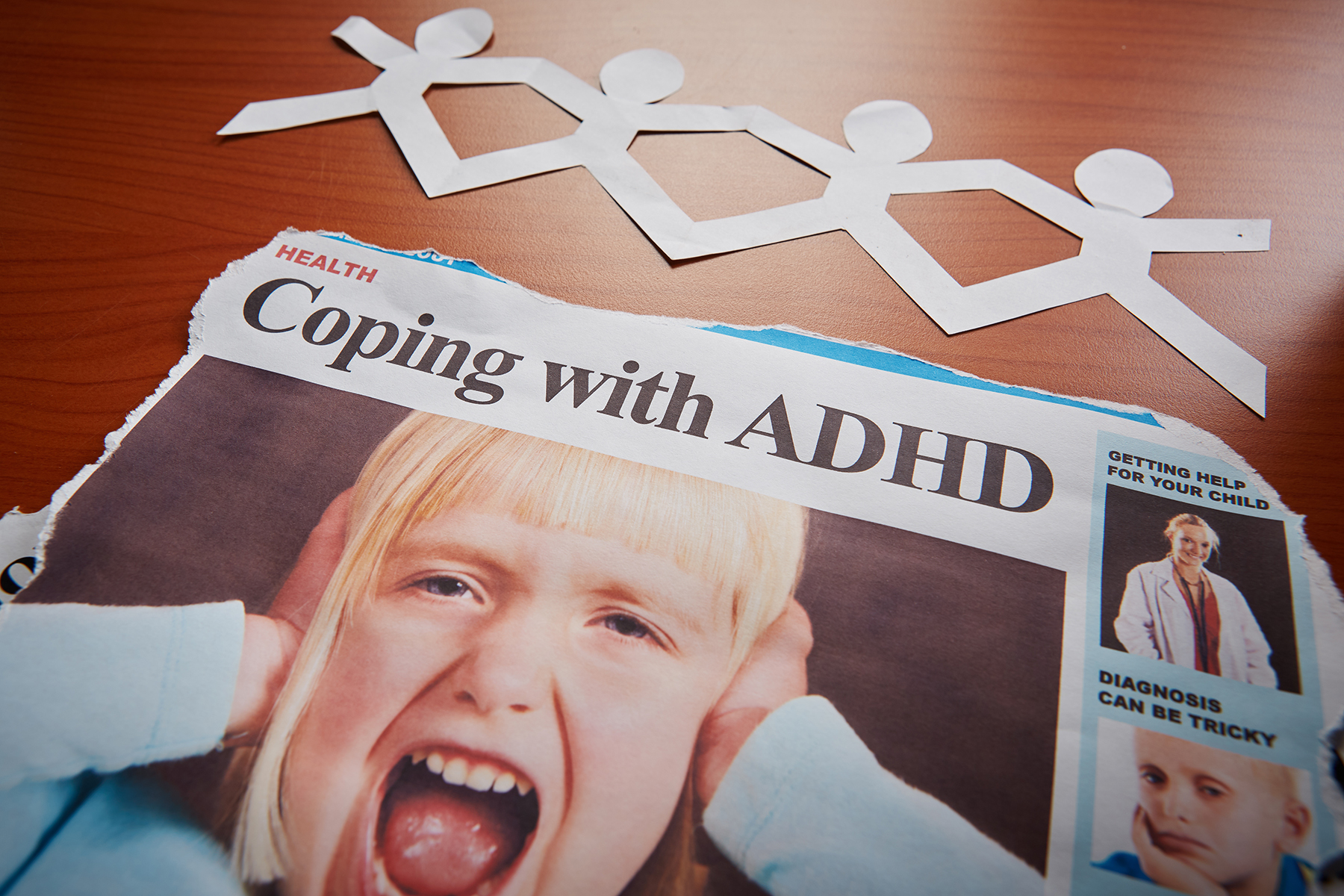ADHD is Real — Here’s How to Manage Symptoms

Many people feel overwhelmed by the information overload and multitasking our fast-paced world requires. Just imagine what those demands feel like for people with Attention Deficit Hyperactivity Disorder (ADHD). The inattention, restlessness, and disorganization associated with ADHD are brain- and genetically based. Hyperactivity and lack of impulse control commonly appear in children, but both kids and adults can struggle with focus, patience, self-control, and other life skills. And symptoms can differ in boys and girls.
Depending on the individual, ADHD can present itself as inattentiveness (traditionally called ADD), hyperactivity and impulsiveness (traditionally called ADHD), or a combination of all three. Where one person might be extremely energetic, another might appear quiet and lost in thought, and yet another might be chronically disorganized.
Hyperactive, impulsive behavior subsides with age, but the disorder doesn’t disappear, says Barbara J. Coffey, M.D., chair of the Department of Psychiatry and Behavioral Sciences at the University of Miami Miller School of Medicine. “It persists over time, characterized by deficits in executive function,” Dr. Coffey says. Executive functions, including focus, planning, organization, and self-regulation, become harder as children transition from adolescence to adulthood. In other words, as demands increase so does frustration. “Bright kids do okay until middle or high school. When cognitive demands increase, it’s harder to keep up,” Dr. Coffey says.
Diagnosis is key to living a more manageable life
“We can now diagnose the onset of this disorder up to age 12. If undiagnosed and untreated, ADHD can cause psychological problems starting in the late teens to early 20s, including depression, anxiety, and substance abuse – some people self-medicate to modulate their symptoms,” Dr. Coffey says.
Many people are smart enough to compensate for their symptoms. Even so, going undiagnosed can lead to troubled relationships, job instability, and problems with the law, Dr. Coffey says. Putting those pitfalls aside, people who grew up before ADHD was commonly diagnosed may struggle with other difficulties. For example, Dr. Coffey recalls a particularly bright patient facing a potential career crisis. “This doctor was never diagnosed. He could not stay on task with his 50 to 60 patient charts, so he procrastinated and was about to be fired.” With diagnosis and treatment, the doctor was able to perform his fast-paced, demanding job.
Getting a handle on ADHD begins with a comprehensive physical and psychiatric or psychological exam to rule out other conditions that might complicate diagnosis. The clinician obtains the patient’s health history from the individual and his or her parents. Additionally, clinicians often reach out to children’s teachers since a diagnosis requires impairment in more than one setting, usually home and school.
Managing symptoms
If a disorder exists, it is usually treated with medication and psychosocial interventions. While Dr. Coffey believes medication is a “powerful” way to manage symptoms, it doesn’t have to be the default treatment. “With mild ADHD, we try cognitive behavioral therapy (CBT) and coaching first.” Over several sessions, a therapist helps the patient strengthen their organizational skills and ability to stay on task. Patients develop coping techniques using timelines, reminders, planners, and other tools. Therapists also help parents improve their communication skills and instill the structural changes children need to function well. Adult patients will benefit if a partner or spouse gets involved. “Often, it’s the partner or spouse who first brings the patient in, saying they can’t live with the situation anymore,” Dr. Coffey says.
Coaching also falls under the cognitive behavioral therapy umbrella. The patient meets with a trained, certified life skills or ADHD coach who walks him or her through situations he or she might face at home, school, or work. “Coaches offer practical guidelines, tips, and techniques,” Dr. Coffey says. One type of coaching, Parent-Child Interaction Therapy (PCIT), has parents of children up to age 10 establish limits, rewards, and short-term goals.
Adding structure
Coping with ADHD, Dr. Coffey says, “is all about structure.” In addition to diagnosis, therapy, and possibly medication, she says the following resources provide guidelines that help build structure into daily life:
- Children and Adults with ADHD (CHADD.org): This website offers education, support, and resources, including listings of therapists who diagnose and treat ADHD, ADHD coaches, and certified educational therapists.
- The Adult ADHD Tool Kit: Using CBT to Facilitate Coping Inside and Out, written by J. Russell Ramsay and Anthony L. Rostain.
- Taking Charge of Adult ADHD, written by Russell Barkley.
How parents and partners can help
Dr. Coffey acknowledges the “very delicate line” between helping and enabling and a lot depends on age. For example, with a college-bound patient, Dr. Coffey puts some of the responsibility in his or her hands. “To ensure continuity of care, I refer the college student to a local therapist where he or she attends college or the college’s counseling center. To establish accountability, I also schedule a follow-up appointment to see college-age patients when they return home on holiday break.”
As a therapist, she walks her own fine line. “Clinicians must respect patients’ desires to try things their own way. It’s important to take patient choices into account and design the treatment to fit the patient’s needs.”
Ultimately, she offers hope even while underscoring the need to face reality. “ADHD is a biologically based brain disorder. It’s real. Be aware of it, but don’t stigmatize it. Diagnosis is important, and it’s never too late to get help and improve your life.”
To learn more about UHealth services that support people with ADHD, call 305-243-0214 for adults or 305-270-5050 for children up to age 18.
Nancy Moreland is a contributing writer for UMiami Health News. She has written for several major health care systems and the Centers for Disease Control and Prevention. You can also find her writings in the Chicago Tribune.
Tags: ADD, ADHD, attention deficit, Dr. Barbara Coffey
